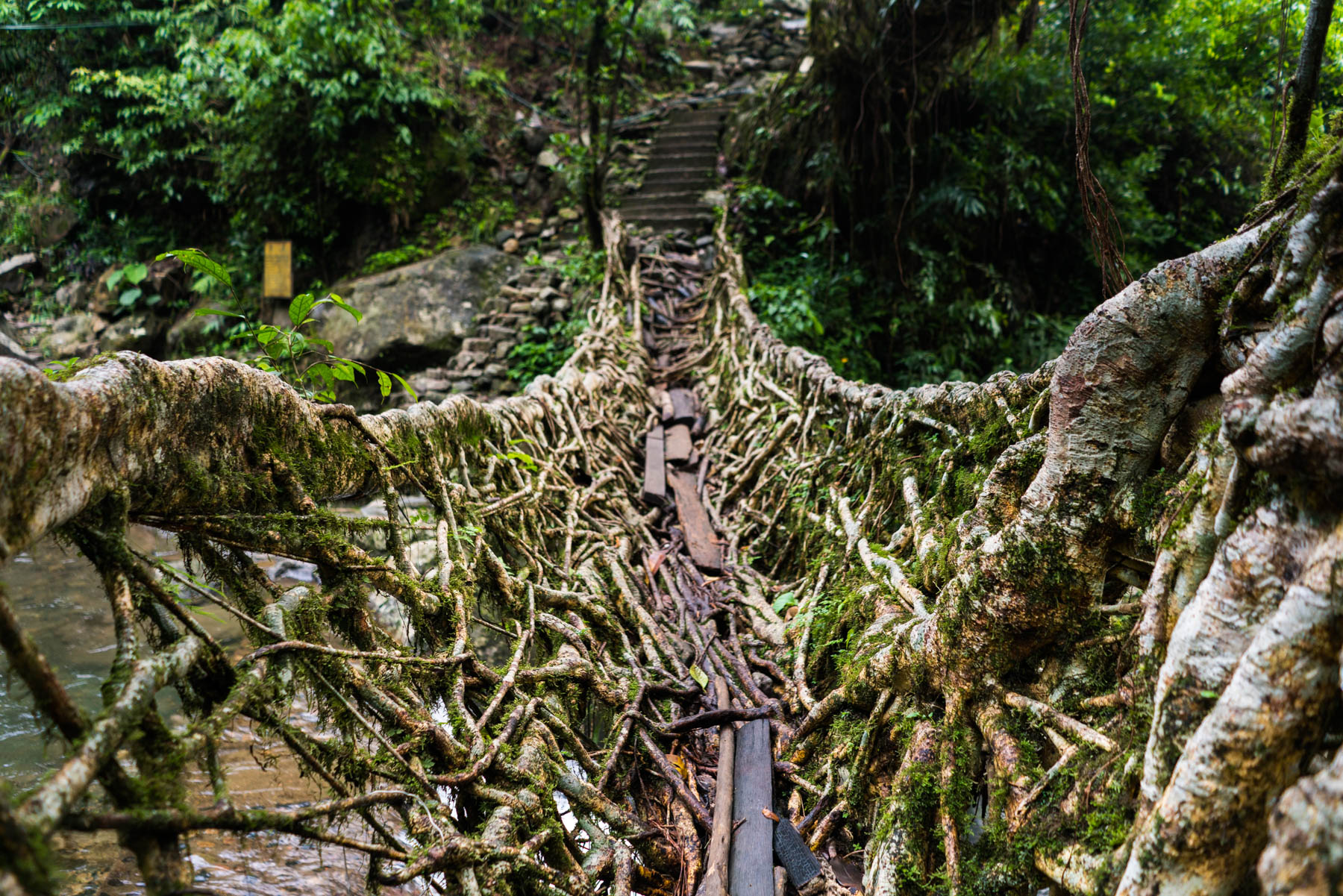
It was 2012, and I was hearing about Meghalaya’s Living Root Bridges for the very first time.
It was the day after summer vacation, and my social studies teacher was excitedly telling us about her trip to Meghalaya with her college friends. We listened, in awe, as she described something so utterly spectacular and foreign in vivid detail.
But 2012 was seven years ago. Now, an Instagram search for #LivingRootBridge draws 11,549 results.
And while there are no official statistics, about how many tourists in particular visited them, the Meghalaya Tourism Board stated that the tourist footfall grew 80% from 2009 to 2019.
Needless to say, the living root bridges are popular.

Perhaps, a little too popular.
These bridges are ancient, built by entwining rubber and fig trees, and are constructed organically—they get bigger and stronger as the trees grow, and can take as many as fifteen years to become truly usable.
But they were designed to link villages for practical purposes, not bear the burden of selfie-hungry hoards.
Also read: Tons Of Foreign Tourists Visit This World’s Largest River Island In Assam But It Might Be Perishing Sooner Than We Think
The unprecedented footfall weaken the structures, which can spell disaster in the flood prone areas that they are located.
Earlier this year, a group of villagers bravely saved a 200 year old bridge from the ravages of flood waters. But that is clearly the exception, not the rule.
However, it is good to see that these bridges also have their advocates.

Like Morningstar Khongthaw, a 23 year-old from Meghalaya, aiming to preserve not only the bridges, but the art of creating them as well.
“My ancestors made these bridges for a practical need: to cross streams and rivers. These bridges were crucial for us to connect to the outside world, and to is each other. Today each one represents a history of knowledge and skill, passed from one generation to the next.”
He doesn’t want them to be reduced to mere “tourist attractions,” and is, in fact, critical of its commercialisation.
“It was very evident that tourist footfall was affecting the giant bridge. The area around the trees had concrete additions,” he says. The concrete additions block the trees’ access to water.
“It was very evident that tourist footfall was affecting the giant bridge. The area around the trees had concrete additions.”

Practical solutions have been offered for this situation, such as declaring the bridges as national heritage sites and granting them legal protections, tightly regulating the number of tourists, and outright banning them from the damaged ones altogether. So far their numbers have not even been recorded, let alone quelled.
Any ninth grader with social studies can recite the benefits of tourism: foreign exchange, revenue, jobs. But it’s high time that we look at the costs, and learn to draw a line when they get too high.
Image credits: Google Images, Indian Express, Livemint
Sources: Indian Express, Times of India, Instagram.
Find the author on twitter @nandini_rawat_1



































